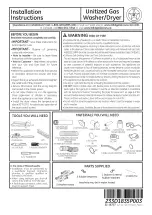
16
Loading the Dishwasher Baskets
Recommendation
1.
Consider buying utensils which are identifi ed as Dishwasher-proof.
2.
Use a mild detergent that is described as ‘for Dishwasher use’. If necessary, seek
further information from the detergent manufacturers.
3.
For particular items, select a programme with as low temperature as possible.
4.
To prevent damage, do not take glass and cutlery out of the Dishwasher immediately
after the programme has ended.
5.
For washing in the Dishwasher the following cutlery/dishware:
Are not suitable
Are of limited suitability
a. Cutlery with wooden, bone china or
mother-of-pearl handles
b. Plastic items that are not heat resistant
c. Cutlery consisting of glue that are not
temperature resistant
d. Bonded cutlery items or dishware
e. Pewter or copper items
f. Crystal
glass
g. Steel items that are subject to rusting
h. Wooden platters
i. Items made from synthetic fi bres
j. Colour coated appearance items
a. Some types of glasses can become dull
after a large number of washes
b. Silver and aluminium parts have a
tendency to discolour during washing
c. Glazed patterns may fade if washed
frequently
Attention Before or After Loading the
Dishwasher Baskets
Follow the loading guidelines for the best performance of the Dishwasher. Scrape off any
large amounts of leftover food. Soften remnants of burnt food in pans.
Place objects in the Dishwasher in the following way:
1.
Items such as cups, glasses, pots and pans are faced downwards so that water
cannot collect in the container or a deep base.
2.
Curved items, or ones with recesses, should be loaded aslant so that water can run
off.
3.
All utensils are stacked securely and cannot tip over.
4.
All utensils are placed in the way that the spray arms can rotate freely during
washing.
5.
Items of dishware and cutlery must not nest together, or cover over each other.
Using the Dishwasher
















































